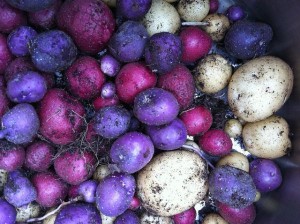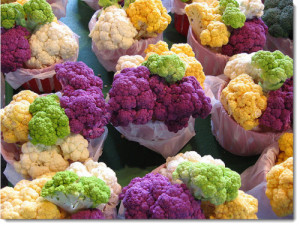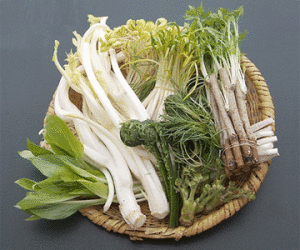By Deane Alban
Contributing Writer for Wake Up World
Since man first figured out how to domesticate plants, we’ve been trying to make them more palatable. Most edible wild plants are too bitter, sour, astringent, tough, full of seeds, or dry to be enjoyable. Over the course of the last 12,000 years we’ve bred plants to taste better, to be more productive, and to be easier to harvest, store, and transport. But the real reason we eat, for nutrition, has rarely been a consideration!
Your brain needs a wide variety of nutrients found in plants. It needs vitamins, minerals, antioxidants to ward off free radical damage, and phytonutrients — compounds found in plants that promote human health. Scientists estimate there are over 10,000!
So while the food we now eat may be tastier and we can get it all year round, the cost is that its nutritional value has been left in the dust.
Foraging vs. Farming – No Contest!
Wild plants that our ancestors foraged are much more nutritious than the fruits and vegetable we eat today. Native plants contain more nutrients than comparable domesticated plants, and often a lot less sugar. For example, the original ancestor of corn, teosinte, contains a mere 2% sugar while sweet corn contains 40% sugar!
Wild plants also contain a lot more antioxidants and phytonutrients like beta carotene and lycopene. Wild tomatoes, for example, contain 15 times more lycopene than supermarket tomatoes. Wild apples in Nepal contains 100 times more phytonutrients than apple varieties we normally eat.
Of course, these wild versions would not receive many rave reviews from a modern western palate, either.
[pro_ad_display_adzone id=”110028″]
12 Cool “Veggie Hacks”
We can’t go back to exclusively foraging our food, but there are some amazing “veggie hacks” that you can use to get the most nutrition out of the vegetables you do eat. By properly using, storing, and preparing vegetables, you can up their nutritional content and enhance their bio-availability tremendously!
1. Eat broccoli first
Broccoli is one of the most perishable vegetables yet the average time from harvest to plate is a long 7 weeks. By the time you get it home it’s lost 80% of its nutrition. For this reason, try to buy broccoli at a farmer’s market and buy whole heads, not cut-up florets. Store in a perforated plastic bag in the fridge and eat within a day or two of purchase. Eat raw or cook minimally — steam for 4 minutes or sauté lightly.
2. Tear up lettuce before you store it
Most lettuce eaten in the US is the iceberg variety. This is the least nutritious kind. The more colorful and the looser the leaf, the more nutritious it will be. One of the weirdest tips is to tear your lettuce into bite-size pieces before storing. This activates it to produce more phytonutrients to protect itself from predators!
Better yet, skip lettuce and make salads with spinach, wild arugula, or radicchio, which are generally more nutrition-rich than lettuce.
3. Scallions trump onions
Sweet onions are the least nutritious type of onion and scallions are by far the most nutrition-dense. They contain an unbelievable 140 times more phytonutrients than white onions!
 4. Buy new potatoes, organic if possible
4. Buy new potatoes, organic if possible
Potato skins contain half of a potato’s antioxidants, but it also contain most of the pesticides. For this reason, you should consider getting organic.
New potatoes cause a lower rise in blood sugar and colored potatoes that are blue, purple or almost black are the most like wild potatoes and contain the most nutrition.
5. Cook beets
In the US we eat very few beets, and that’s too bad! Beets are extremely nutritious and have a low glycemic index in spite of their sweetness. This is one of several vegetables that is actually healthier when eaten steamed (not boiled) or roasted instead of raw.
6. Bye-bye baby — carrots, that is
Carrots are hard to break down, so cooked carrots provide more beta carotene than raw! Buying carrots with the tops left on assures they are reasonably fresh. Carrots that come in a bag can be months old.
If you rely on baby carrots for a healthy snack, you’ll be disheartened to learn that they are only misshapen normal size carrots that have been whittled down to baby carrot shape and are nothing special. I felt very ripped off when I learned of this, how about you?
7. Tomatoes — bigger is not better
Most people look forward to a big juicy tomato, but when choosing tomatoes, the smaller and the darker red, the better.
Tomatoes on the vine are more expensive but unless you find they taste better, you can give them a pass. Nutritionally they are not a big improvement.
Tomatoes are more nutritious when cooked. Cooking slightly changes the lycopene to a more bioavailable form.
Counterintuitively, processed tomatoes of any kind — paste, sauce, or diced — are often the most nutritious form! These tomatoes are usually cooked and processed within a few hours of harvest, retaining all their phytonutrients.
Look for tomato products that come in glass jars, BPA-free cans, or tetra packs or make your own.
(For the purists out there, tomato is actually a fruit.)
 8. Choose cabbage and cauliflower’s colorful cousins
8. Choose cabbage and cauliflower’s colorful cousins
These two veggies are the pale members of the cruciferous family and are not the most nutrient-dense. Try their colorful antioxidant rich cousins instead. Red cabbage costs more than green but contains 6 times more antioxidants.
Cauliflower comes in bright green, purple and even orange. You might think these are some weird mutants, but actually it’s the other way around.
The colorful versions are closer to wild forms. The white cauliflower we’re used to is a mutant albino.
9. Cook kale
Kale and collards come close to being as healthy as wild greens. But it’s best not to add raw greens to smoothies or salads.
Raw kale is high in oxalic acid which can lead to muscle weakness, kidney stones, gout and low thyroid function. Lightly steaming first destroys oxalic acid.
10. Eat asparagus — it’s a walk on the wild side
The asparagus we eat today has barely changed from its wild ancestors and thus is one of the most nutritious vegetables. There was no need to improve on perfection! It is one more veggie best to eat steamed rather than raw. Steaming increases antioxidant availability by 30%.
11. Use an onion to keep avocadoes fresh
Wild avocadoes (another fruit) are half the size of an egg and mostly pit with little flesh. It doesn’t seem possible that something so smooth and creamy could be fibrous, but an avocado contains as much fiber as two bowls of oatmeal!
If you are left with half an avocado, keeping the pit in place then applying lemon juice is the old standby to keep it from turning brown but I don’t think that works very well. They still get brown and mushy.
This video shows you the greatest tip for keeping avocados fresh for up to five days. It’s a fantastic tip I wish I’d known many avocados ago.
12. Grow your own and shop local
Using the tips above can give your more nutrition and more value for your dollar. But of course the best “veggie hack” of all is to grow your own or shop from your local farmer’s market!
Want to Learn More?
If you want to learn more ways to get the most nutrition from your fruit and vegetables, reading the eye-opening new book Eating on the Wild Side: The Missing Link to Optimum Health, winner of the 2014 IACP Cookbook Award in the category of “Food Matters”. Author Jo Robinson reveals how we dramatically lost nutrition in our diets when we moved from gathering wild food to agriculture.
For even more great ideas you can use in the kitchen to make meal preparation easy and and your meals nutritious check out the Stone Soup cooking series.
It’s not easy to always eat right. If you know you don’t eat as you should, you need to take a high-quality multivitamin supplement and a potent antioxidant supplement to fill in the nutritional gaps. Your brain NEEDS the best nutrition you can give it to help offset the chronic, low-level damage done by our modern lifestyle habits.
Previous articles by Deane:
- 5 Ways to Tame Springtime Allergies Naturally
- Protect Your Brain and Bones with Strength Training
- Beat Brain Fog: Know the Causes, Symptoms and Solutions
- 5 Common Food Additives That Are Toxic to Your Brain
- Coconut Oil Cures Alzheimer’s Disease: Truth or Wishful Thinking?
- 6 Common Habits that Rob You of Essential Brain Vitamins
- The ABCs of Vitamins for Memory and Brain Health
- The Toll Being Overweight Takes On Your Brain
- Work Smarter, Not Harder: Everyday Memory Improvement Tips
- Eat Your Way Smart With a Brain Food Diet
About the author:
Deane Alban holds a bachelor’s degree in biology and has taught and written on a wide variety of natural health topics for over 20 years. Her current focus is helping people overcome brain fog, “senior moments”, and other signs of mental decline now, and preventing Alzheimer’s and dementia in the future.
The human brain is designed to last a lifetime, but modern life takes a greater toll on the brain than most people realize. Deane teaches the best ways to keep your brain healthy and stay mentally sharp for life at her website BeBrainFit.com.
[pro_ad_display_adzone id=”110027″]








